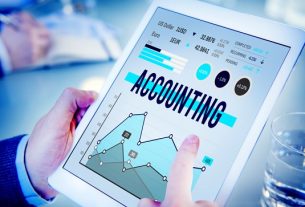Online forex trading is an attractive way to access potential financial success. It involves the simultaneous buying of one currency and selling of another, enabling you to potentially make returns as exchange rates change. As a relatively low-risk investment vehicle, it can be great for those new to investing or those with experience who want to diversify their portfolios. However, before entering any form of online trading, traders must know about the products they’re considering and strategies for managing risk.
This article discusses the potential of forex trading and the steps you should take before you begin considering taking part in the live market. If you are interested in potentially finding success in the financial markets, read on.
Determine your portfolio makeup
One of the most important things to start thinking about is how you want your portfolio to be made up. Of course, forex trading will be part of your investment approach. However, to create a well-balanced portfolio, you may want to branch out into other assets, such as stocks, commodities, or derivative assets. To make an informed decision, you can first gauge your interest in different markets through reading up on them. Many online resources offer guides such as how to trade silver, how CFD trading works, and the mechanics of stock trading. Determine how you can balance your forex trades with other investments in the future, but take it slow for now.
Identifying your goals
Next, you must identify your investment goals and ensure they are realistic. Forex trading in Australia can potentially be rewarding, but you need to set parameters before you begin. Your goals could include short-term gains or long-term wealth accumulation through a diversified portfolio. Understanding the amount of risk you are comfortable taking will help inform your trading decisions.
For example, if you are risk averse, engaging in more conservative forex strategies, such as investing in blue chip stocks, may suit you. On the other hand, those who have higher risk tolerance can consider more aggressive approaches such as day trading or scalping.
Traders must also think about their trading style. Some traders prefer the long-term approach, investing in stocks and currencies they believe will rise over time. Others prefer a more active approach, benefiting from short-term price movements and exploiting market volatility. It is essential to understand your trading style before engaging in online trading.
Understanding currency pairs
Once you know your investment goals and risk parameters, it is vital to understand how online forex trading works and the characteristics of currency pairs. When trading currencies, you’ll be buying one currency and selling another at the same time. For example, if you buy US dollars (USD) with Australian dollars (AUD), this is known as a ‘currency pair.’ Currency pairs are divided into paramount, minor and exotic categories depending on their liquidity, volatility, and tradability. Major pairs tend to have low spreads and high liquidity, making them great for new traders looking to minimise risk. On the other hand, minor or exotic pairs may offer more opportunities for higher returns but come with higher levels of risk due to lower liquidity or broader spreads.
Develop a trading strategy
Once you understand currency pairs, it’s time to develop a trading strategy that suits your goals and risk tolerance. It could include technical analysis, such as charting or fundamental analysis, which involves researching economic reports and news events that influence exchange rates. Your strategy should include a money management plan to manage risk effectively while pursuing returns. Money management plans are based on position sizing, stop-loss orders and take-profit levels, and other strategies such as hedging and arbitrage.
Testing strategies with a demo account before committing capital to online trading is essential. A demo account lets you practice trading in a simulated market environment without risking real funds. This way, you can build confidence in your trading strategies and understand how different markets move before trading with real money.
Selecting a broker
Once you have developed a trading strategy, it is essential to select the right broker. Brokers facilitate trades between buyers and sellers by providing leverage, which means that traders can open more prominent positions than their actual capital size. The leverage size varies between brokers; therefore, traders should compare services such as spreads, commissions, fees, and customer service when selecting a broker. Brokers are regulated by organisations such as the Australian Securities and Investments Commission (ASIC), so check for this compliance before investing with any broker. Traders should also ensure their brokers offer a trading platform compatible with their preferred devices. It is imperative to select a reputable broker with a robust trading platform.
Risk management
Online trading offers excellent potential for financial rewards but comes with risks. Risk management is essential to ensure you only lose what you can afford to and protect your capital from adverse market conditions.
Traders can apply various risk management techniques in online forex trading in Australia. These include setting stop-loss orders, limiting the size of each position and diversifying portfolios by investing in different currency pairs. Traders should also consider automated risk management tools such as hedging strategies or other risk control measures on some brokerage platforms. Implementing these tools will help reduce exposure to risk without sacrificing potential returns.
Monitor performance
Successful online forex trading relies heavily on monitoring the performance of trades and positions. Keeping a close eye on your open positions is critical to understanding market conditions and taking timely actions to protect yourself from losses or benefit from potential returns. Traders should also review their strategies regularly to ensure they remain valid in the current market environment.
It’s also essential to track your overall performance periodically, using metrics such as return on investment (ROI) or drawdown, which measure how well you trade over time. It helps you identify areas for improvement and adapt your strategies accordingly.




